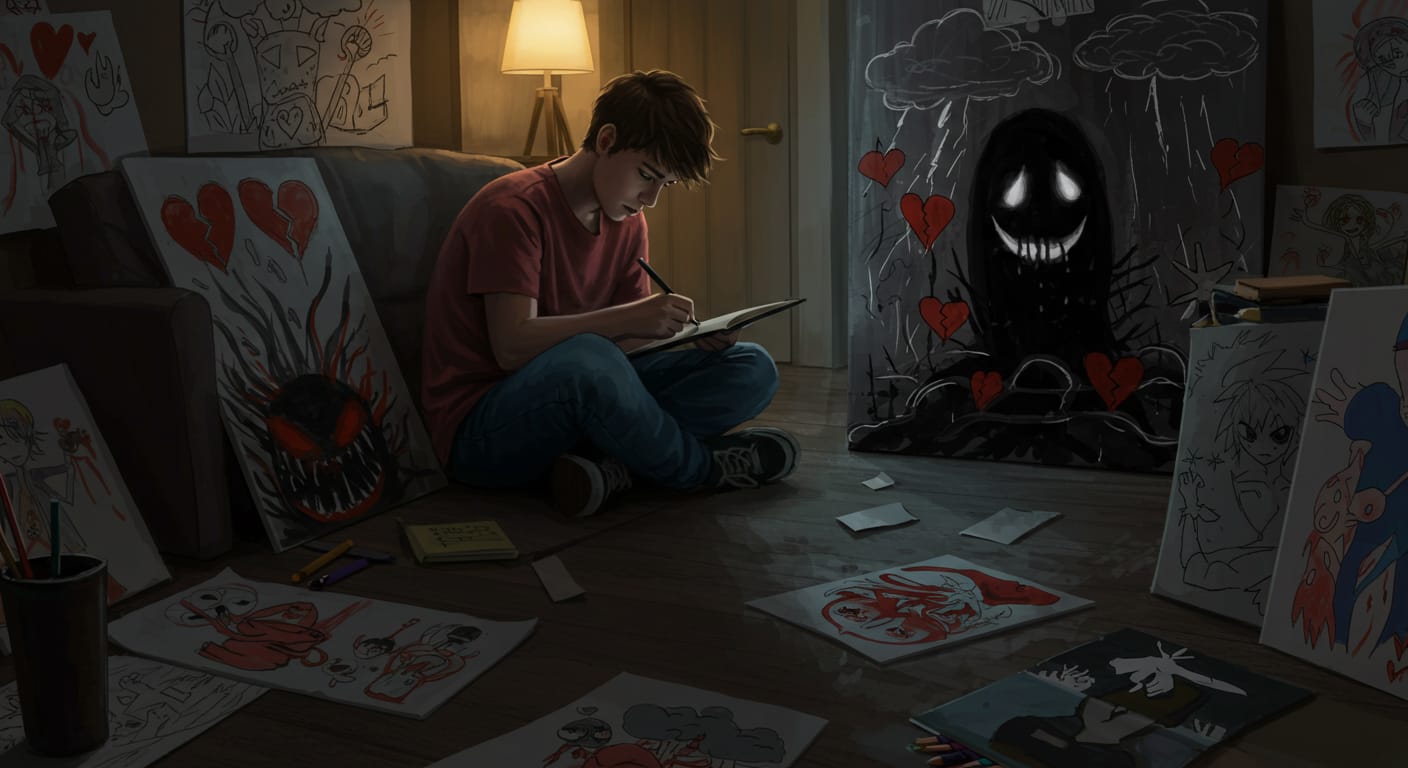
Darkish Doesn’t All the time Imply Harmful—However It Does Imply One thing
Teenage drawing could be each a artistic outlet and a window into emotional struggles. In case your son or daughter is persistently sketching disturbing or violent imagery, it could possibly be extra than simply inventive expression—it could be a silent cry for assist.
Artwork is commonly how younger individuals specific feelings they will’t put into phrases. And whereas not each darkish drawing means one thing is mistaken, repeated themes of loss of life, isolation, violence, or despair may sign that your teen is coping with inner battle, trauma, or melancholy.
🧠 Deciphering the Drawings—Begin With Commentary, Not Alarm
Earlier than leaping to conclusions or contacting a psychiatrist instantly, take a step again. Consultants suggest beginning with a couple of easy steps:
1. Observe Your Teen’s Environment
Are they withdrawn, secretive, or all of the sudden tired of issues they as soon as loved? Do they appear overwhelmed, anxious, or moody?
2. Ask Them About Their Drawing
As an alternative of reacting with worry or judgment, attempt asking,
“That’s an intense image—are you able to inform me the story behind it?”
Allow them to clarify. Generally, what appears violent or morbid to us might signify one thing symbolic or innocent to them.
🎨 The Which means of Colours: Particularly Black
A choice for black or darkish shades doesn’t robotically point out melancholy—it may merely replicate a part of self-expression (like a Goth id or fascination with thriller). However when these colours are paired with recurring violent or distressing themes, it’s value a more in-depth look.
Vital: The identical drawing at age 13 may imply one thing very completely different than at age 18. Context issues.
⚠️ When to Fear: Crimson Flags in Teen Artwork
Drawings ought to increase concern in the event that they:
Are repetitive in nature (e.g., repeated violent or suicidal themes)
Present graphic self-harm or loss of life
Embody disturbing symbols or language
Coincide with main behavioral modifications (isolation, falling grades, irritability)
Typically, these may point out underlying situations corresponding to:
Despair
Nervousness
Trauma or PTSD
Suicidal ideation
🎮 Influences Aren’t All the time Apparent
TV, films, video video games, and music can affect what teenagers draw, nevertheless it’s not all the time trigger for alarm. Youngsters typically use artwork to course of what they see, not essentially as a result of they need to act on it.
Nonetheless, you ought to be attentive to patterns—if their drawings evolve into darker and extra excessive expressions, it may sign deeper emotional struggles.
💬 Have the Dialog—Gently
The way in which you react issues immensely. If you happen to present panic or disapproval, your teen might shut down solely. As an alternative:
Be curious, not important
Hear with out interrupting
Acknowledge their emotions, even when you don’t perceive them absolutely
🧑⚕️ Search Skilled Assist—You Don’t Must Do This Alone
If:
These drawings persist or worsen,
Your teen’s trainer shares comparable issues,
Otherwise you discover severe emotional modifications,
… it’s time to talk to your pediatrician. They will refer you to a licensed therapist or psychologist who can do a full analysis.
Artwork is revealing. It could supply highly effective clues into a baby’s internal world—if we’re keen to look and pay attention.
✅ Last Thought
Don’t dismiss disturbing artwork as “only a part.” Whether or not it’s a type of therapeutic expression or a hidden SOS, your consideration, understanding, and motion may make all of the distinction. The earlier your teen feels protected expressing themselves verbally—not simply visually—the higher likelihood they’ve at therapeutic and thriving.


